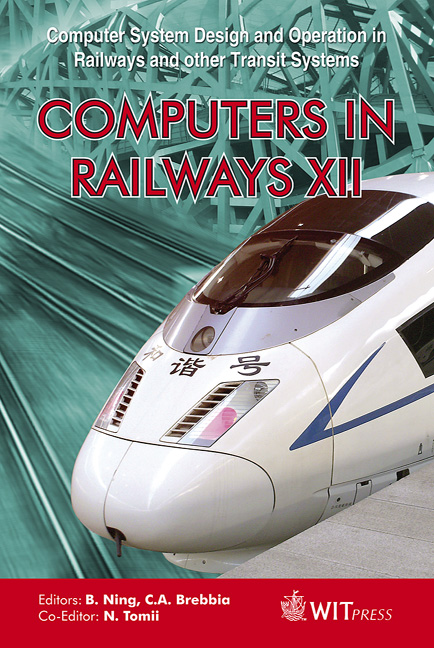Strategies For Less Motion Sickness On Tilting Trains
Price
Free (open access)
Transaction
Volume
114
Pages
11
Page Range
581 - 591
Published
2010
Size
387 kb
Paper DOI
10.2495/CR100541
Copyright
WIT Press
Author(s)
R. Persson & B. Kufver
Abstract
Many railways have put tilting trains into operation on lines with horizontal curves with small radii. Tilting trains have vehicle bodies that can roll inwards, reducing the lateral acceleration perceived by the passengers. Tilting trains can therefore run through curves at higher speeds. However, excessive tilt motions can cause motion sickness in sensitive passengers. On the other hand, too little tilting will cause discomfort from high lateral acceleration and jerk. The present paper presents new tilt algorithms aimed at balancing the conflicting objectives of ride comfort and less motion sickness. An enhanced approach is taken, where the amount of tilt depends on the local track conditions and the train speed. The paper shows how selected tilt algorithms influence certain motion sickness related carbody motions. Speed profiles designed to avoid local peaks in the risk of motion sickness are another possibility. The speed profiles for both tilting and non-tilting trains are today set from safety and comfort perspectives only, thus minimizing the running time. The present paper shows how speed profiles could be used to balance the conflicting objectives of running time and less risk of motion sickness. The result is derived from simulations and put in relation to today’s tilt algorithms and speed profiles on the Stockholm–Gothenburg main line in Sweden (457 km). Keywords: tilting train, tilt algorithm, tilt strategy, passenger comfort, motion sickness, running time simulation.
Keywords
tilting train, tilt algorithm, tilt strategy, passenger comfort, motion sickness, running time simulation





